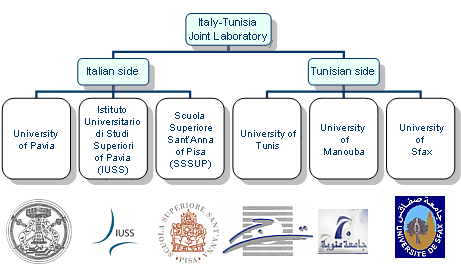Software and Communication Platforms for High-Performance Collaborative Grid
General purposes
The overall project is articulated in two complementary sub-projects, at the Infrastructure level (next generation optical networks) at the Device Level (components for optical networks) and at the Application level (real-time collaborative e-learning environments), combining the wide expertise and competence of the involved institutions in a synergic international collaboration.

At the infrastructure level, wireless and landline access networks are evolving towards the offer of a variety of packet services with different traffic profiles and different quality of service and with an increasing request of bandwidth that justifies the deployment of an optical transport infrastructure in the metro/core region. In fact, all traffic leaving the future base stations or broadband domestic access will eventually be IP-based and will be carried on an IP network that replaces the traditional ATM networks. At the link layer, MPLS (MultiProtocol Label Switching) will be most likely used as a convergence layer. In particular we propose to investigate traffic engineering techniques and Quality of Service support for metro/core optical network for efficient support of end-to-end multimedia applications.
At the device level, next generation optical networks requiring the use of reconfigurable devices that can be remotely configured will be investigated. The presence of reconfigurable devices should guarantee the necessary flexibility to permit a dynamical management of network resources, thus allowing to reduce the cost of the required infrastructures.
At the application level, the projectís overall aim is to systematically explore the potentials of bandwidth-demanding real-time interaction in collaborative environments for education, as well obstacles to its use. The project focuses on the design, development, and evaluation of: i) Virtual environments for collaborative learning environments, mediated by non-immersive Virtual Reality tools for visually rich knowledge representation and user interaction; ii) Vision-based perceptive interfaces for natural interaction with learning environments, through the acquisition of explicit and implicit data from the user; and iii) Other bandwidth demanding applications (multimedia document management, knowledge management, VoIP, on-line collaboration).

